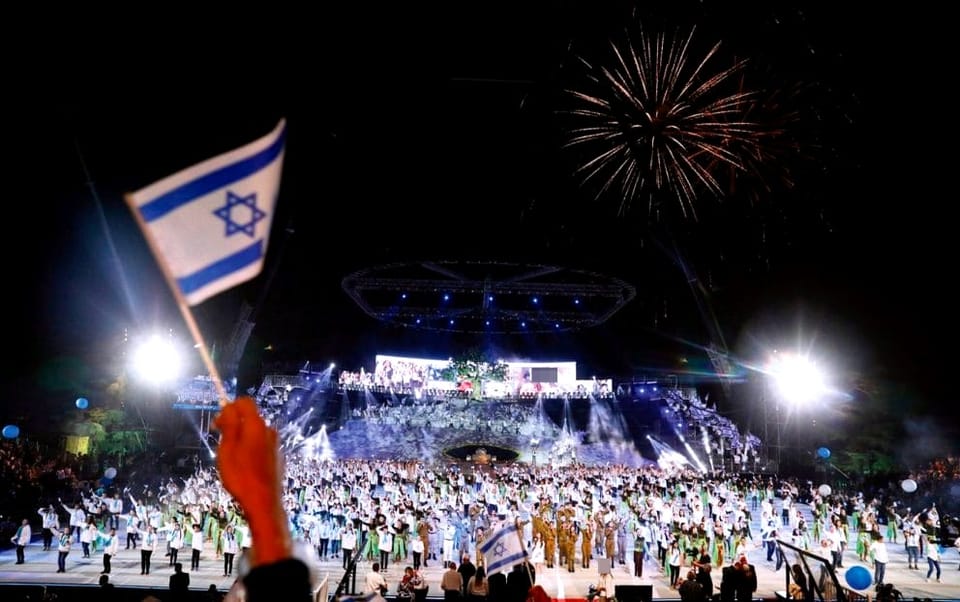Why Don’t Charedim Celebrate Yom HaAtzmaut Like Other Jews?

Every year on the 5th of Iyar, much of Israel bursts into celebration. Streets are filled with blue and white, fireworks light the sky, and many feel a surge of Jewish pride. For those who see the founding of the State of Israel as a modern miracle—the return of the Jewish people to their homeland—Yom HaAtzmaut is a day of joy.
But in Charedi neighborhoods, the day is largely observed in quiet. No parades. No flags. No festivities. Not even a mention in most yeshivos or shuls. For many looking in from the outside, it raises the question: Why would religious Jews not celebrate such an important national milestone?
The answer is not rooted in apathy, or rejection of Klal Yisrael, or even politics. It is rooted in a fundamentally different view of Jewish destiny, redemption, and what it means to be a holy nation.
The Core Question: Is This the Redemption We’ve Waited For?
Charedim believe with perfect faith in the coming of Moshiach and the redemption of the Jewish people. They daven for it every day, multiple times:
"ותחזינה עינינו בשובך לציון ברחמים." “May our eyes behold Your return to Zion in mercy.” — Shemoneh Esrei
The Torah and the Prophets describe redemption as a time of Divine revelation, led by a descendant of David HaMelech, a tzaddik and Torah leader, who will rebuild the Beis HaMikdash, gather in the exiles, and establish a Torah society.
The founding of a secular state in 1948—led by individuals who were not Torah observant and often opposed Torah values—does not match that vision. While the State has offered refuge and physical protection for many Jews, Charedim see it as a political development, not a spiritual redemption.
They are grateful for Hashem’s kindness in allowing Jewish life to flourish, but they do not confuse survival with Geulah, or independence with spiritual wholeness.
A Flag on the Yeshiva? Understanding the Symbolism
Perhaps one of the most iconic moments of Yom HaAtzmaut is the sight of Israeli flags flying across the country—even on some yeshiva rooftops.
In most cases, particularly in Charedi neighborhoods, this flag is not put up voluntarily. The Israeli government mandates that all state-funded institutions fly the national flag on Yom HaAtzmaut. Yeshivos and religious schools that don’t comply risk losing critical funding or facing legal trouble. In many cases, flags are raised quietly, at night, by building managers—not by the Roshei Yeshiva or talmidim, and certainly not as a form of celebration.
But there’s one yeshiva where the flag has flown publicly and intentionally every year: Yeshivas Ponevezh in Bnei Brak.
This is not an accident—and it’s not a contradiction.
The founder of the yeshiva, Rav Yosef Shlomo Kahaneman zt”l, known as the Ponevezher Rav, was a complex and visionary leader. Having seen the destruction of European Jewry with his own eyes, and having lost his family in the Holocaust, he was determined to rebuild Torah in Eretz Yisrael—with confidence and dignity.
He chose to fly the Israeli flag on top of the yeshiva on Yom HaAtzmaut—not because he supported secular Zionism—but as a statement:
"We are not afraid. Torah is back in Eretz Yisrael—and we will raise its banner high."
It was a symbolic act—not of endorsement of the secular State, but of resilience. He famously said:
“Let them see that Torah is alive and well—and stronger than ever—in the Land they tried to build without it.”
Even so, this act was never replicated in other yeshivos, and it has remained a point of quiet tension within the Charedi world. Some viewed it as strategic; others disagreed with the gesture entirely. But no one doubted that the Ponevezher Rav’s intention was to uplift Torah, not secular nationalism.
Charedi Life in Israel Is Not Rejection—It’s Redirection
Charedim in Israel are not ignoring history. They are living it.
They build yeshivos. They raise Torah families. They daven at the Kosel. They settle communities across the Land. They express hakoras hatov to Hashem for His kindness, safety, and the miracle of Torah’s rebirth after the Holocaust.
But they do not frame the founding of the secular State as redemption, because it does not meet the criteria our Sages laid out.
Their loyalty is to Hashem, His Torah, and the eternal promise of a Geulah that will be complete—not partial, not political, but holy from beginning to end.
Conclusion: A Celebration That Waits for the Right Moment
So no, Charedim don’t celebrate Yom HaAtzmaut with flags and fanfare. But not out of cynicism or hatred. Out of hope.
They are still waiting for the day when:
- The Shechinah returns to Tzion,
- Torah becomes the foundation of national life,
- And the Beis HaMikdash stands once more in Yerushalayim.
That will be a day of true celebration. Until then, we continue to build—with love for our people, loyalty to our Torah, and faith in Hashem’s ultimate plan.
Sources & Footnotes
- Bereishis 15:18 – Hashem’s promise of Eretz Yisrael to Avraham’s descendants.
- Rambam, Hilchos Melachim 11:1 – Description of Moshiach and the process of true Geulah.
- Shemoneh Esrei – Tefillah for Hashem’s return to Zion.
- Historical accounts – The founding of the State by secular Zionist leaders.
- Ponevezher Rav’s flag practice – Based on documented public statements and interviews; viewed as symbolic resilience, not Zionist support.
- Government flag regulations – Requirement for public/state-funded buildings to display the Israeli flag on Independence Day.
